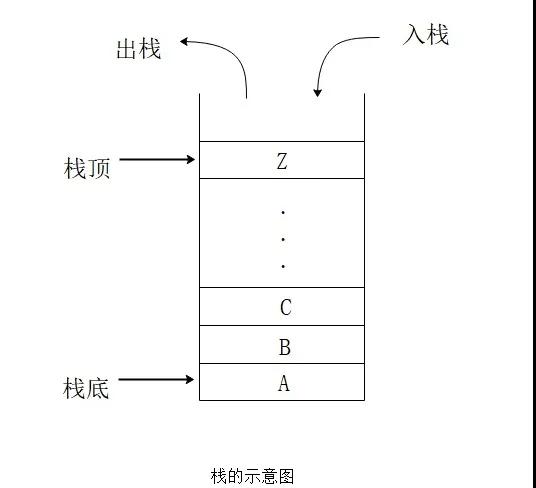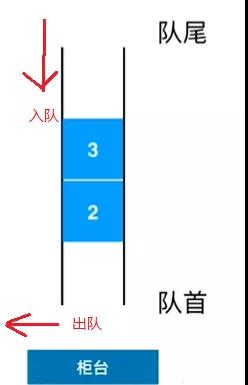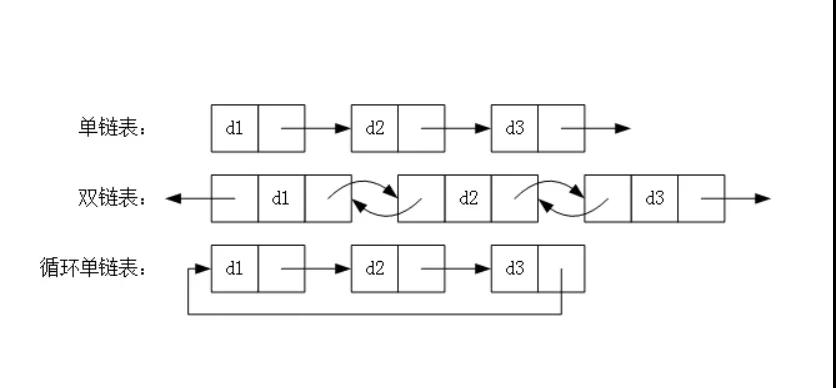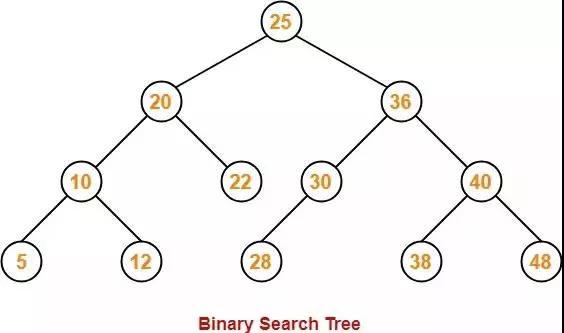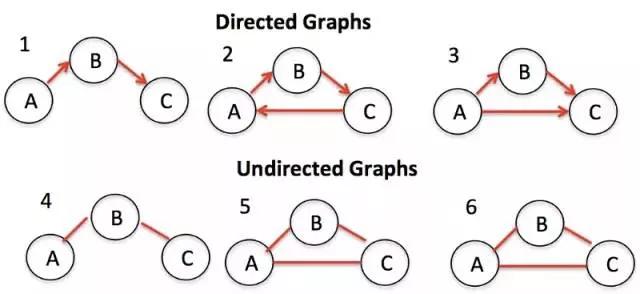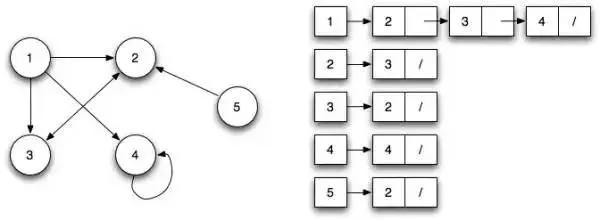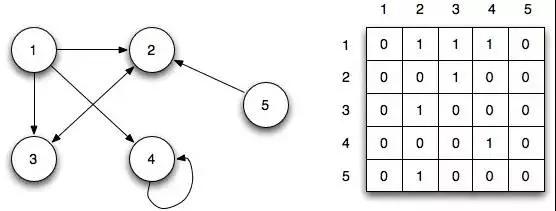1.Stack(栈)
堆栈遵循LIFO(后进先出)的原则。如果你把书堆叠起来,上面的书会比下面的书先拿。或者当你在网上浏览时,后退按钮会引导你到最近浏览的页面。
Stack具有以下常见方法:
- push:输入一个新元素
- pop:删除顶部元素,返回删除的元素
- peek:返回顶部元素
- length:返回堆栈中元素的数量
Javascript中的数组具有Stack的属性,但是我们使用 function Stack() 从头开始构建Stack
- function Stack() {
- this.count = 0;
- this.storage = {};
- this.push = function (value) {
- this.storage[this.count] = value;
- this.count++;
- }
- this.pop = function () {
- if (this.count === 0) {
- return undefined;
- }
- this.count--;
- var result = this.storage[this.count];
- delete this.storage[this.count];
- return result;
- }
- this.peek = function () {
- return this.storage[this.count - 1];
- }
- this.size = function () {
- return this.count;
- }
- }
2.Queue(队列)
Queue与Stack类似。唯一不同的是,Queue使用的是FIFO原则(先进先出)。换句话说,当你排队等候公交车时,队列中的第一个总是先上车。
队列具有以下方法:
- enqueue:输入队列,在最后添加一个元素
- dequeue:离开队列,删除前元素并返回
- front:得到第一个元素
- isEmpty:确定队列是否为空
- size:获取队列中元素的数量
JavaScript中的数组具有Queue的某些属性,因此我们可以使用数组来构造Queue的示例:
- function Queue() {
- var collection = [];
- this.print = function () {
- console.log(collection);
- }
- this.enqueue = function (element) {
- collection.push(element);
- }
- this.dequeue = function () {
- return collection.shift();
- }
- this.front = function () {
- return collection[0];
- }
- this.isEmpty = function () {
- return collection.length === 0;
- }
- this.size = function () {
- return collection.length;
- }
- }
优先队列
队列还有另一个高级版本。为每个元素分配优先级,并将根据优先级对它们进行排序:
- function PriorityQueue() {
- ...
- this.enqueue = function (element) {
- if (this.isEmpty()) {
- collection.push(element);
- } else {
- var added = false;
- for (var i = 0; i < collection.length; i++) {
- if (element[1] < collection[i][1]) {
- collection.splice(i, 0, element);
- added = true;
- break;
- }
- }
- if (!added) {
- collection.push(element);
- }
- }
- }
- }
测试一下:
- var pQ = new PriorityQueue();
- pQ.enqueue([ gannicus , 3]);
- pQ.enqueue([ spartacus , 1]);
- pQ.enqueue([ crixus , 2]);
- pQ.enqueue([ oenomaus , 4]);
- pQ.print();
返回
- [
- [ spartacus , 1 ],
- [ crixus , 2 ],
- [ gannicus , 3 ],
- [ oenomaus , 4 ]
- ]
3. Linked List(链表)
从字面上看,链表是一个链式数据结构,每个节点由两个信息组成:节点的数据和指向下一个节点的指针。链表和传统数组都是线性数据结构,具有序列化的存储方式。当然,它们也有差异:
| 比较 | Array | Linked List |
|---|---|---|
| 内存分配 | 静态内存分配,发生在编译和序列化过程中 | 动态内存分配,发生在运行过程中,非连续的。 |
| 获取元素 | 从索引中读取,速度更快 | 读取队列中的所有节点,直到得到特定的元素,速度较慢 |
| 添加/删除元素 | 由于是顺序记忆和静态记忆,速度较慢 | 由于是动态分配,只需要少量的内存开销,速度更快 |
| 空间结构 | 一维或多维 | 单边/双边,或循环链表 |
单边链表通常具有以下方法:
- size:返回节点数
- head:返回头部的元素
- add:在尾部添加另一个节点
- remove:删除某些节点
- indexOf:返回节点的索引
- elementAt:返回索引的节点
- addAt:在特定索引处插入节点
- removeAt:删除特定索引处的节点
- /** 链表中的节点 **/
- function Node(element) {
- // 节点中的数据
- this.element = element;
- // 指向下一个节点的指针
- this.next = null;
- }
- function LinkedList() {
- var length = 0;
- var head = null;
- this.size = function () {
- return length;
- }
- this.head = function () {
- return head;
- }
- this.add = function (element) {
- var node = new Node(element);
- if (head == null) {
- head = node;
- } else {
- var currentNode = head;
- while (currentNode.next) {
- currentNode = currentNode.next;
- }
- currentNode.next = node;
- }
- length++;
- }
- this.remove = function (element) {
- var currentNode = head;
- var previousNode;
- if (currentNode.element === element) {
- head = currentNode.next;
- } else {
- while (currentNode.element !== element) {
- previousNode = currentNode;
- currentNode = currentNode.next;
- }
- previousNode.next = currentNode.next;
- }
- length--;
- }
- this.isEmpty = function () {
- return length === 0;
- }
- this.indexOf = function (element) {
- var currentNode = head;
- var index = -1;
- while (currentNode) {
- index++;
- if (currentNode.element === element) {
- return index;
- }
- currentNode = currentNode.next;
- }
- return -1;
- }
- this.elementAt = function (index) {
- var currentNode = head;
- var count = 0;
- while (count < index) {
- count++;
- currentNode = currentNode.next;
- }
- return currentNode.element;
- }
- this.addAt = function (index, element) {
- var node = new Node(element);
- var currentNode = head;
- var previousNode;
- var currentIndex = 0;
- if (index > length) {
- return false;
- }
- if (index === 0) {
- node.next = currentNode;
- head = node;
- } else {
- while (currentIndex < index) {
- currentIndex++;
- previousNode = currentNode;
- currentNode = currentNode.next;
- }
- node.next = currentNode;
- previousNode.next = node;
- }
- length++;
- }
- this.removeAt = function (index) {
- var currentNode = head;
- var previousNode;
- var currentIndex = 0;
- if (index < 0 || index >= length) {
- return null;
- }
- if (index === 0) {
- head = currentIndex.next;
- } else {
- while (currentIndex < index) {
- currentIndex++;
- previousNode = currentNode;
- currentNode = currentNode.next;
- }
- previousNode.next = currentNode.next;
- }
- length--;
- return currentNode.element;
- }
- }
4. Set(集合)
集合是数学的基本概念:定义明确且不同的对象的集合。ES6引入了集合的概念,它与数组有一定程度的相似性。但是,集合不允许重复元素,也不会被索引。
一个典型的集合具有以下方法:
- values:返回集合中的所有元素
- size:返回元素个数
- has:确定元素是否存在
- add:将元素插入集合
- remove:从集合中删除元素
- union:返回两组交集
- difference:返回两组的差
- subset:确定某个集合是否是另一个集合的子集
为了区分ES6中的 set,我们在以下示例中声明为 MySet:
- function MySet() {
- var collection = [];
- this.has = function (element) {
- return (collection.indexOf(element) !== -1);
- }
- this.values = function () {
- return collection;
- }
- this.size = function () {
- return collection.length;
- }
- this.add = function (element) {
- if (!this.has(element)) {
- collection.push(element);
- return true;
- }
- return false;
- }
- this.remove = function (element) {
- if (this.has(element)) {
- index = collection.indexOf(element);
- collection.splice(index, 1);
- return true;
- }
- return false;
- }
- this.union = function (otherSet) {
- var unionSet = new MySet();
- var firstSet = this.values();
- var secondSet = otherSet.values();
- firstSet.forEach(function (e) {
- unionSet.add(e);
- });
- secondSet.forEach(function (e) {
- unionSet.add(e);
- });
- return unionSet; }
- this.intersection = function (otherSet) {
- var intersectionSet = new MySet();
- var firstSet = this.values();
- firstSet.forEach(function (e) {
- if (otherSet.has(e)) {
- intersectionSet.add(e);
- }
- });
- return intersectionSet;
- }
- this.difference = function (otherSet) {
- var differenceSet = new MySet();
- var firstSet = this.values();
- firstSet.forEach(function (e) {
- if (!otherSet.has(e)) {
- differenceSet.add(e);
- }
- });
- return differenceSet;
- }
- this.subset = function (otherSet) {
- var firstSet = this.values();
- return firstSet.every(function (value) {
- return otherSet.has(value);
- });
- }
- }
5. Hast table(哈希表)
哈希表是一种键值数据结构。由于通过键值查询的速度快如闪电,所以常用于Map、Dictionary或Object数据结构中。如上图所示,哈希表使用哈希函数(hash function)将键转换为数字列表,这些数字作为对应键的值。要快速使用键获取价值,时间复杂度可以达到O(1)。相同的键必须返回相同的值——这是哈希函数的基础。
哈希表具有以下方法:
- add:添加键值对
- remove:删除键值对
- lookup:使用键查找对应的值
一个Javascript中简化的哈希表的例子:
- function hash(string, max) {
- var hash = 0;
- for (var i = 0; i < string.length; i++) {
- hash += string.charCodeAt(i);
- }
- return hash % max;
- }
- function HashTable() {
- let storage = [];
- const storageLimit = 4;
- this.add = function (key, value) {
- var index = hash(key, storageLimit);
- if (storage[index] === undefined) {
- storage[index] = [
- [key, value]
- ];
- } else {
- var inserted = false;
- for (var i = 0; i < storage[index].length; i++) {
- if (storage[index][i][0] === key) {
- storage[index][i][1] = value;
- inserted = true;
- }
- }
- if (inserted === false) {
- storage[index].push([key, value]);
- }
- }
- }
- this.remove = function (key) {
- var index = hash(key, storageLimit);
- if (storage[index].length === 1 && storage[index][0][0] === key) {
- delete storage[index];
- } else {
- for (var i = 0; i < storage[index]; i++) {
- if (storage[index][i][0] === key) {
- delete storage[index][i];
- }
- }
- }
- }
- this.lookup = function (key) {
- var index = hash(key, storageLimit);
- if (storage[index] === undefined) {
- return undefined;
- } else {
- for (var i = 0; i < storage[index].length; i++) {
- if (storage[index][i][0] === key) {
- return storage[index][i][1];
- }
- }
- }
- }
- }
6. Tree(树)
Tree(树)数据结构是多层结构。与Array,Stack和Queue相比,它也是一种非线性数据结构。这种结构在插入和搜索操作时效率很高。我们来看看树型数据结构的一些概念。
- root:树的根节点,无父节点
- parent node:上层的直接节点,只有一个
- child node:下层的直接节点可以有多个
- siblings:共享同一个父节点
- leaf:没有孩子的节点
- Edge:节点之间的分支或链接
- path:从起始节点到目标节点的边
- Height of Nod:特定节点到叶节点的最长路径的边数
- Height of Tree:根节点到叶节点的最长路径的边数
- Depth of Node:从根节点到特定节点的边数
- Degree of Node:子节点数
这里以二叉树为例。每个节点最多有两个节点,左边节点比当前节点小,右边节点比当前节点大。
二叉树中的常用方法:
- add:将节点插入树
- findMin:获取最小节点
- findMax:获取最大节点
- find:搜索特定节点
- isPresent:确定某个节点的存在
- remove:从树中删除节点
JavaScript中的示例:
- class Node {
- constructor(data, left = null, right = null) {
- this.data = data;
- this.left = left;
- this.right = right;
- }
- }
- class BST {
- constructor() {
- this.root = null;
- }
- add(data) {
- const node = this.root;
- if (node === null) {
- this.root = new Node(data);
- return;
- } else {
- const searchTree = function (node) {
- if (data < node.data) {
- if (node.left === null) {
- node.left = new Node(data);
- return;
- } else if (node.left !== null) {
- return searchTree(node.left);
- }
- } else if (data > node.data) {
- if (node.right === null) {
- node.right = new Node(data);
- return;
- } else if (node.right !== null) {
- return searchTree(node.right);
- }
- } else {
- return null;
- }
- };
- return searchTree(node);
- }
- }
- findMin() {
- let current = this.root;
- while (current.left !== null) {
- current = current.left;
- }
- return current.data;
- }
- findMax() {
- let current = this.root;
- while (current.right !== null) {
- current = current.right;
- }
- return current.data;
- }
- find(data) {
- let current = this.root;
- while (current.data !== data) {
- if (data < current.data) {
- current = current.left
- } else {
- current = current.right;
- }
- if (current === null) {
- return null;
- }
- }
- return current;
- }
- isPresent(data) {
- let current = this.root;
- while (current) {
- if (data === current.data) {
- return true;
- }
- if (data < current.data) {
- current = current.left;
- } else {
- current = current.right;
- }
- }
- return false;
- }
- remove(data) {
- const removeNode = function (node, data) {
- if (node == null) {
- return null;
- }
- if (data == node.data) {
- // no child node
- if (node.left == null && node.right == null) {
- return null;
- }
- // no left node
- if (node.left == null) {
- return node.right;
- }
- // no right node
- if (node.right == null) {
- return node.left;
- }
- // has 2 child nodes
- var tempNode = node.right;
- while (tempNode.left !== null) {
- tempNode = tempNode.left;
- }
- node.data = tempNode.data;
- node.right = removeNode(node.right, tempNode.data);
- return node;
- } else if (data < node.data) {
- node.left = removeNode(node.left, data);
- return node;
- } else {
- node.right = removeNode(node.right, data);
- return node;
- }
- }
- this.root = removeNode(this.root, data);
- }
- }
测试一下:
- const bst = new BST();
- bst.add(4);
- bst.add(2);
- bst.add(6);
- bst.add(1);
- bst.add(3);
- bst.add(5);
- bst.add(7);
- bst.remove(4);
- console.log(bst.findMin());
- console.log(bst.findMax());
- bst.remove(7);
- console.log(bst.findMax());
- console.log(bst.isPresent(4));
- 1
- 7
- 6
- false
7. Trie (发音为 “try”)
Trie或“前缀树”也是搜索树的一种。Trie分步存储数据——树中的每个节点代表一个步骤。Trie是用来存储词汇的,所以它可以快速搜索,特别是自动完成功能。
Trie中的每个节点都有一个字母——分支之后可以组成一个完整的单词。它还包括一个布尔指示符,以显示这是否是最后一个字母。
Trie具有以下方法:
- add:在字典树中插入一个单词
- isWord:确定树是否由某些单词组成
- print:返回树中的所有单词
- /** Node in Trie **/
- function Node() {
- this.keys = new Map();
- this.end = false;
- this.setEnd = function () {
- this.end = true;
- };
- this.isEnd = function () {
- return this.end;
- }
- }
- function Trie() {
- this.root = new Node();
- this.add = function (input, node = this.root) {
- if (input.length === 0) {
- node.setEnd();
- return;
- } else if (!node.keys.has(input[0])) {
- node.keys.set(input[0], new Node());
- return this.add(input.substr(1), node.keys.get(input[0]));
- } else {
- return this.add(input.substr(1), node.keys.get(input[0]));
- }
- }
- this.isWord = function (word) {
- let node = this.root;
- while (word.length > 1) {
- if (!node.keys.has(word[0])) {
- return false;
- } else {
- node = node.keys.get(word[0]);
- word = word.substr(1);
- }
- }
- return (node.keys.has(word) && node.keys.get(word).isEnd()) ? true : false;
- }
- this.print = function () {
- let words = new Array();
- let search = function (node = this.root, string) {
- if (node.keys.size != 0) {
- for (let letter of node.keys.keys()) {
- search(node.keys.get(letter), string.concat(letter));
- }
- if (node.isEnd()) {
- words.push(string);
- }
- } else {
- string.length > 0 ? words.push(string) : undefined;
- return;
- }
- };
- search(this.root, new String());
- return words.length > 0 ? words : null;
- }
- }
8. Graph(图)
Graph(有时称为网络)是指具有链接(或边)的节点集。根据联系是否有方向性,可以进一步分为两组(即定向图和不定向图)。Graph在我们的生活中被广泛使用——在导航应用中计算最佳路线,或者在社交媒体中推荐朋友,举两个例子。
图有两种表示形式:
邻接清单
在此方法中,我们在左侧列出所有可能的节点,并在右侧显示已连接的节点。
邻接矩阵
相邻矩阵以行和列的形式显示节点,行和列的交点诠释了节点之间的关系,0表示没有联系,1表示有联系,>1表示权重不同。
要查询图中的节点,必须用 “宽度优先搜索"(BFS)方法或 "深度优先搜索"(DFS)方法在整个树网中进行搜索。
让我们看一个例子的BFS在Javascript:
- function bfs(graph, root) {
- var nodesLen = {};
- for (var i = 0; i < graph.length; i++) {
- nodesLen[i] = Infinity;
- }
- nodesLen[root] = 0;
- var queue = [root];
- var current;
- while (queue.length != 0) {
- current = queue.shift();
- var curConnected = graph[current];
- var neighborIdx = [];
- var idx = curConnected.indexOf(1);
- while (idx != -1) {
- neighborIdx.push(idx);
- idx = curConnected.indexOf(1, idx + 1);
- }
- for (var j = 0; j < neighborIdx.length; j++) {
- if (nodesLen[neighborIdx[j]] == Infinity) {
- nodesLen[neighborIdx[j]] = nodesLen[current] + 1;
- queue.push(neighborIdx[j]);
- }
- }
- }
- return nodesLen;
- }
测试一下:
- var graph = [
- [0, 1, 1, 1, 0],
- [0, 0, 1, 0, 0],
- [1, 1, 0, 0, 0],
- [0, 0, 0, 1, 0],
- [0, 1, 0, 0, 0]
- ];
- console.log(bfs(graph, 1));
- // 结果
- {
- 0: 2,
- 1: 0,
- 2: 1,
- 3: 3,
- 4: Infinity
- }
就是这样——我们已经介绍了所有常见的数据结构,并给出了JavaScript中的例子。这应该能让你更好地了解数据结构在计算机中的工作原理。祝你编码愉快!
原文:https://medium.com/better-programming/8-common-data-structures-in-javascript-3d3537e69a27
作者:Kingsley Tan
本文转载自微信公众号「前端全栈开发者」,可以通过以下二维码关注。转载本文请联系前端全栈开发者公众号。














